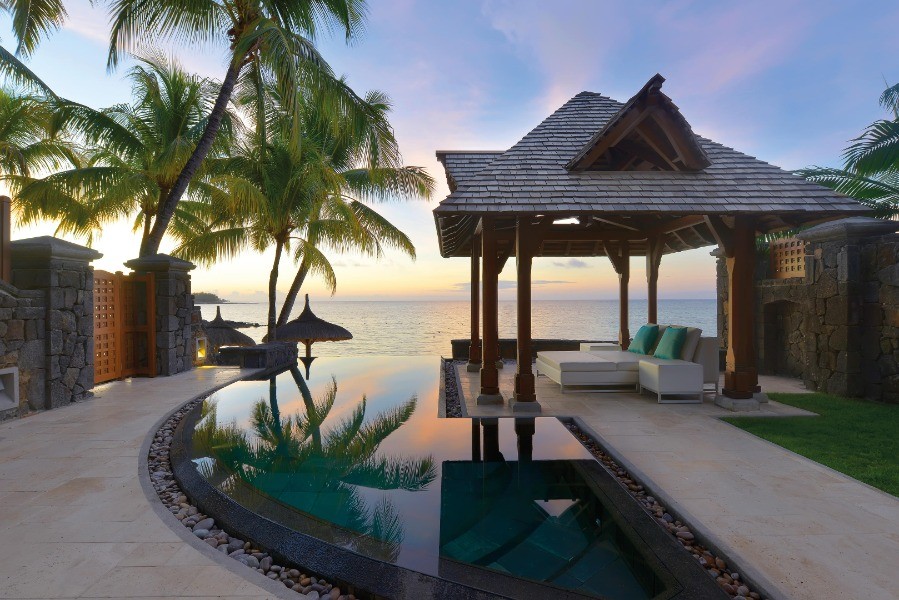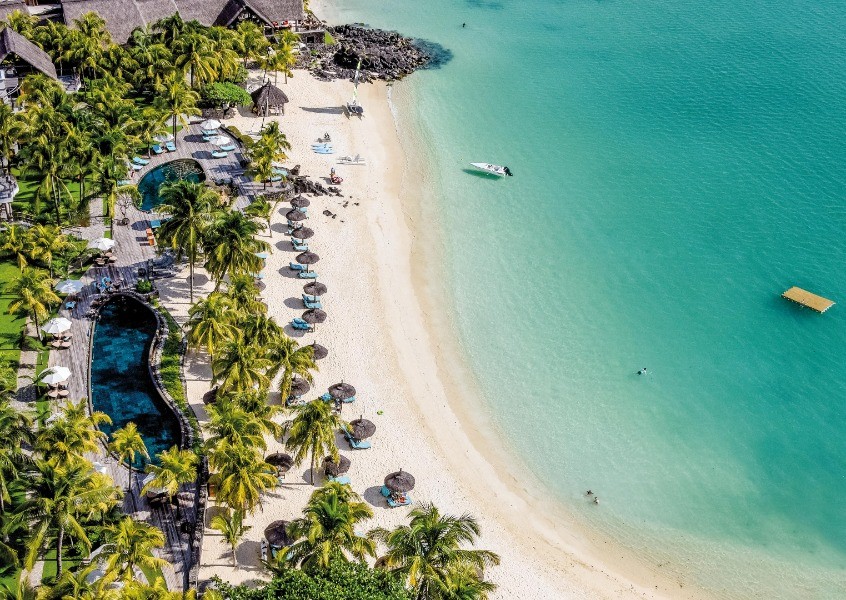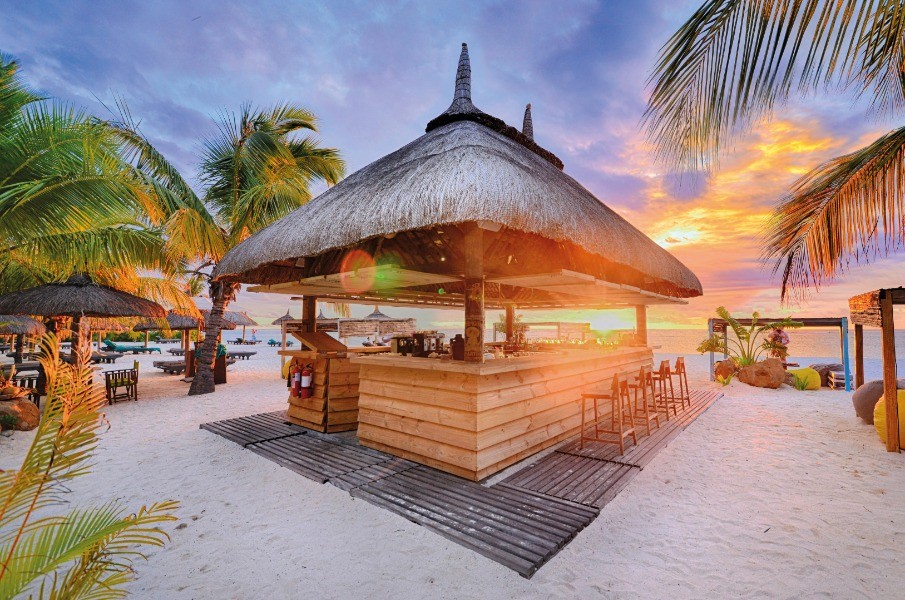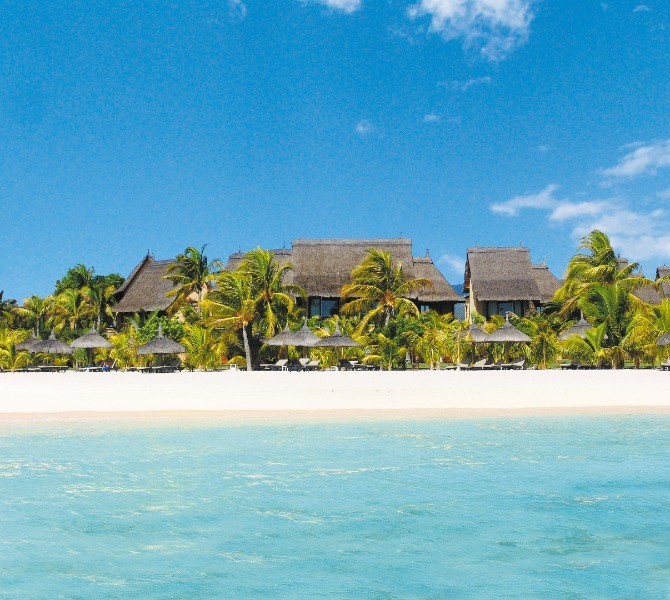Planning a trip to the stunning island of Mauritius? SIXT.VN is here to guide you on finding the Best Time To Travel To Mauritius, ensuring a memorable experience tailored to your preferences. Whether you’re seeking sunshine, calmer seas, or vibrant cultural festivals, Mauritius offers something special year-round. Let’s explore the ideal seasons, activities, and travel tips for your perfect Mauritian getaway, complete with insights into the cost of travel and weather conditions to help you plan the ideal escape.
1. What is the Best Time of Year to Visit Mauritius for Ideal Weather?
The best time of year to visit Mauritius for ideal weather is from May to December. During these months, you’ll experience a dry and sunny climate with comfortable temperatures, making it perfect for exploring the island and enjoying its beautiful beaches.
The period from May to December offers a delightful escape with average temperatures ranging from 22°C to 28°C (72°F to 82°F). This time of year avoids the intense heat and humidity that can be present during the summer months (January to March), as well as the risk of cyclones, according to the Mauritius Meteorological Services. For those looking to enjoy outdoor activities, such as hiking in Black River Gorges National Park or water sports along the coast, these months offer the most favorable conditions. According to the Mauritius Tourism Promotion Authority, peak tourist season occurs between October and December, so booking accommodations and activities in advance is highly recommended.
2. When is the Best Time to Visit Mauritius for Honeymooners?
The best time to visit Mauritius for honeymooners is from September to November. This period offers a sweet spot with warm weather, fewer crowds, and ideal conditions for romantic beach getaways and activities.
During September to November, Mauritius experiences a transition from the cooler winter months to the warmer summer months, resulting in pleasant temperatures ranging from 24°C to 28°C (75°F to 82°F). These months provide honeymooners with a balance of sunshine and comfortable humidity levels, perfect for long days spent lounging on pristine beaches or exploring the island’s lush landscapes. With fewer tourists compared to the peak season in December and January, couples can enjoy a more intimate and secluded experience. September also marks the beginning of the diving season, offering opportunities for underwater adventures in the crystal-clear waters surrounding the island, according to the Professional Association of Diving Instructors (PADI). Consider booking a private catamaran cruise at sunset or a couple’s spa treatment for added romance.
3. What is the Best Time to Travel to Mauritius for Diving and Snorkeling?
The best time to travel to Mauritius for diving and snorkeling is from September to December and April to June. These periods offer the clearest waters and optimal visibility, allowing you to explore the vibrant marine life and coral reefs.
During these months, the sea conditions are typically calm, with minimal rainfall and lower humidity, enhancing the underwater experience. The water temperature remains comfortable, ranging from 25°C to 29°C (77°F to 84°F), ensuring a pleasant time in the water. According to the Marine Conservation Society, Mauritius boasts over 430 species of marine fish and 200 species of coral. Popular diving sites include Blue Bay Marine Park, known for its diverse coral formations and colorful fish, and Coin de Mire, which offers the chance to see larger marine species like sharks and turtles. You can take advantage of the excellent visibility to capture stunning underwater photos and videos. Remember to bring reef-safe sunscreen to protect the marine environment.
4. When is the Cheapest Time to Go to Mauritius?
The cheapest time to go to Mauritius is during the shoulder seasons of May to June and September to October. These months offer a balance of good weather and fewer crowds, resulting in lower prices for flights and accommodations.
During these periods, you can often find significant discounts on airfare and hotels. According to a study by Kayak.com, flights to Mauritius are typically cheaper during May and June, with potential savings of up to 20% compared to peak season. Similarly, many hotels offer reduced rates during the shoulder seasons to attract visitors. For example, you might find luxury resorts offering rates that are 30% lower than in December or January. Additionally, you can save money by traveling mid-week (Tuesday to Thursday), as flights tend to be cheaper on these days. Consider booking a package deal that includes flights and accommodations for even greater savings.
5. What Time of Year Has the Hottest Weather in Mauritius?
 Mauritius Beach Getaway | SIXT
Mauritius Beach Getaway | SIXT
The time of year with the hottest weather in Mauritius is from January to March. These months mark the peak of the summer season, bringing high temperatures, humidity, and occasional tropical cyclones.
During this period, average temperatures typically range from 28°C to 31°C (82°F to 88°F), with high humidity levels that can make the heat feel even more intense. According to the Mauritius Meteorological Services, January and February are the wettest months, with frequent rain showers and the possibility of cyclones. Despite the heat and humidity, many visitors still flock to Mauritius during these months to enjoy the warm sea temperatures and vibrant atmosphere. If you plan to visit during this time, it’s essential to stay hydrated, wear lightweight clothing, and seek shade during the hottest part of the day. It’s also advisable to monitor weather forecasts and cyclone alerts.
6. What is the Best Month to Visit Mauritius?
The best month to visit Mauritius is October. This month offers the perfect combination of dry weather, warm temperatures, and fewer crowds compared to the peak summer months.
October is known as one of the driest months in Mauritius, with average rainfall of just 60mm (2.4 inches). Temperatures typically range from 22°C to 28°C (72°F to 82°F), providing comfortable conditions for exploring the island and relaxing on the beaches. Additionally, the sea temperatures are ideal for swimming and water sports. According to the Mauritius Tourism Promotion Authority, October sees a decrease in tourist numbers compared to the busy months of December and January, allowing visitors to enjoy a more peaceful and relaxed experience. October is also the month of Diwali, the Hindu Festival of Lights, which is celebrated with vibrant decorations and cultural events across the island.
7. What is the Weather Like in Mauritius in January?
The weather in Mauritius in January is hot and humid, with average temperatures ranging from 26°C to 30°C (79°F to 86°F). It is one of the wettest months of the year, with frequent rain showers and a high risk of tropical cyclones.
January marks the peak of the summer season in Mauritius, bringing intense heat and humidity. The average rainfall during this month is around 220mm (8.7 inches), with rain occurring on approximately 15 days. The sea temperature is warm, averaging around 28°C (82°F), making it ideal for swimming and water sports. However, the high humidity levels can make outdoor activities feel more strenuous. According to the Mauritius Meteorological Services, January has a higher probability of cyclone activity compared to other months. Visitors planning to travel in January should be prepared for hot and humid conditions, pack lightweight and breathable clothing, and stay updated on weather forecasts and cyclone alerts.
8. What is the Weather Like in Mauritius in February?
The weather in Mauritius in February is hot, humid, and rainy, similar to January. Average temperatures range from 26°C to 30°C (79°F to 86°F), and there is a continued risk of tropical cyclones.
February is another month in the peak of the summer season, characterized by high temperatures and humidity. Rainfall is abundant, with an average of around 200mm (7.9 inches) and rain occurring on approximately 14 days. Sea temperatures remain warm, averaging around 28°C (82°F), which is great for swimming. However, the high humidity can make outdoor activities uncomfortable. The Mauritius Meteorological Services indicates that February, like January, has a relatively high risk of cyclone activity. If you plan to travel in February, it’s important to stay informed about weather conditions, pack lightweight clothing, and ensure your travel insurance covers cyclone-related disruptions.
9. What is the Weather Like in Mauritius in March?
The weather in Mauritius in March is hot and humid, with temperatures gradually decreasing from the summer peak. Rainfall is still significant, but slightly less than in January and February, and the risk of cyclones starts to decrease.
In March, the average temperatures range from 25°C to 29°C (77°F to 84°F), providing a bit of relief from the intense heat of the previous months. The average rainfall is around 150mm (5.9 inches), with rain occurring on approximately 12 days. The sea temperature remains warm, averaging around 27°C (81°F), ideal for water activities. While the risk of cyclones is lower than in January and February, it’s still essential to monitor weather forecasts. According to historical data from the Mauritius Meteorological Services, March has seen instances of cyclones, though they are less frequent. Visitors can expect warm and humid conditions, making lightweight clothing a must.
10. What is the Weather Like in Mauritius in April?
 Mauritius Resort Aerial View | SIXT
Mauritius Resort Aerial View | SIXT
The weather in Mauritius in April is warm and less humid, marking the transition from summer to the cooler months. Temperatures range from 24°C to 28°C (75°F to 82°F), and rainfall decreases significantly, making it a pleasant time to visit.
April offers a welcome change from the hot and humid summer months. The average rainfall drops to around 80mm (3.1 inches), with rain occurring on approximately 9 days. The sea temperature is still warm, averaging around 26°C (79°F), making it perfect for swimming and snorkeling. The risk of cyclones is minimal, making it a safer time to travel. According to tourism statistics, April sees a rise in visitor numbers as people seek to escape the colder weather in the Northern Hemisphere. Visitors can enjoy comfortable temperatures and reduced humidity, making it ideal for outdoor activities and exploring the island.
11. What is the Weather Like in Mauritius in May?
The weather in Mauritius in May is mild and dry, with temperatures ranging from 22°C to 26°C (72°F to 79°F). Rainfall is low, and humidity continues to decrease, making it one of the most pleasant months to visit.
May is considered the start of the winter season in Mauritius, but it is vastly different from winters in other parts of the world. The average rainfall is around 50mm (2 inches), with rain occurring on approximately 7 days. The sea temperature is still comfortable, averaging around 25°C (77°F), suitable for swimming. The strong trade winds begin to pick up, making it a great time for windsurfing and kitesurfing. According to weather data, May offers long hours of sunshine and clear skies, making it perfect for outdoor activities. Tourists can enjoy comfortable temperatures and low humidity, which are ideal for hiking, sightseeing, and relaxing on the beaches.
12. What is the Weather Like in Mauritius in June?
The weather in Mauritius in June is cool and dry, with temperatures ranging from 20°C to 24°C (68°F to 75°F). Rainfall is minimal, and the trade winds are stronger, making it a popular time for kitesurfing and windsurfing.
June is one of the cooler months in Mauritius, with average temperatures slightly lower than in May. The average rainfall is around 40mm (1.6 inches), with rain occurring on approximately 6 days. The sea temperature is cooler, averaging around 24°C (75°F), but still comfortable for swimming with a wetsuit. The strong trade winds are ideal for kitesurfing and windsurfing, attracting enthusiasts from around the world. According to water sports enthusiasts, June offers consistent wind conditions for these activities. Visitors can enjoy pleasant temperatures and clear skies, perfect for exploring the island and engaging in water sports.
13. What is the Weather Like in Mauritius in July?
The weather in Mauritius in July is cool and dry, with temperatures ranging from 19°C to 23°C (66°F to 73°F). It is one of the driest months of the year, but the trade winds are at their strongest, making it ideal for windsurfing and kitesurfing.
July is the heart of winter in Mauritius, characterized by cool and dry conditions. The average rainfall is around 30mm (1.2 inches), with rain occurring on approximately 5 days. The sea temperature is cooler, averaging around 23°C (73°F), which may require a wetsuit for extended swimming. The strong trade winds provide excellent conditions for windsurfing and kitesurfing, attracting professionals and amateurs alike. According to meteorological records, July is one of the windiest months in Mauritius. Tourists can enjoy mild temperatures and low humidity, making it a great time for hiking, sightseeing, and water sports.
14. What is the Weather Like in Mauritius in August?
 Mauritius Beach Bar Scene | SIXT
Mauritius Beach Bar Scene | SIXT
The weather in Mauritius in August is mild and dry, similar to July, with temperatures ranging from 19°C to 23°C (66°F to 73°F). The trade winds remain strong, making it another excellent month for windsurfing and kitesurfing.
August continues the winter season in Mauritius, with mild and dry weather. The average rainfall is around 40mm (1.6 inches), with rain occurring on approximately 6 days. The sea temperature remains cool, averaging around 23°C (73°F), which may require a wetsuit for swimming. The strong trade winds continue to provide ideal conditions for windsurfing and kitesurfing. According to sporting event organizers, August often hosts international windsurfing competitions in Mauritius. Visitors can enjoy pleasant temperatures and low humidity, making it a good time for outdoor activities and exploring the island.
15. What is the Weather Like in Mauritius in September?
The weather in Mauritius in September is warm and dry, marking the transition from winter to summer. Temperatures range from 21°C to 25°C (70°F to 77°F), and the trade winds begin to decrease, making it a pleasant time to visit.
September signals the start of the warmer season in Mauritius, with temperatures gradually increasing. The average rainfall is around 50mm (2 inches), with rain occurring on approximately 7 days. The sea temperature is warming up, averaging around 24°C (75°F), making it more comfortable for swimming. The trade winds begin to subside, creating calmer conditions for water sports. According to tourism reports, September sees an increase in visitor numbers as the weather improves. Tourists can enjoy warm temperatures and reduced humidity, making it ideal for exploring the island and relaxing on the beaches.
16. What is the Weather Like in Mauritius in October?
The weather in Mauritius in October is warm and dry, with temperatures ranging from 22°C to 26°C (72°F to 79°F). It is one of the driest months of the year, with plenty of sunshine and comfortable conditions for all activities.
October is considered one of the best months to visit Mauritius due to its favorable weather conditions. The average rainfall is around 60mm (2.4 inches), with rain occurring on approximately 8 days. The sea temperature is warm, averaging around 25°C (77°F), perfect for swimming and snorkeling. The trade winds are gentle, creating calm sea conditions. According to weather statistics, October offers long hours of sunshine and clear skies. Visitors can enjoy warm temperatures and low humidity, making it ideal for outdoor activities, water sports, and exploring the island’s attractions.
17. What is the Weather Like in Mauritius in November?
The weather in Mauritius in November is warm and slightly more humid, with temperatures ranging from 23°C to 27°C (73°F to 81°F). Rainfall starts to increase, but it is still a good time to visit before the peak summer heat.
November marks the transition towards the summer season in Mauritius, with temperatures and humidity levels gradually rising. The average rainfall is around 80mm (3.1 inches), with rain occurring on approximately 9 days. The sea temperature is warm, averaging around 26°C (79°F), perfect for swimming. The trade winds are light, making the sea conditions calm. According to travel guides, November offers a balance of good weather and fewer crowds compared to the peak months. Tourists can enjoy warm temperatures and moderate humidity, making it suitable for outdoor activities and water sports.
18. What is the Weather Like in Mauritius in December?
 Mauritius Beach Paradise | SIXT
Mauritius Beach Paradise | SIXT
The weather in Mauritius in December is hot and humid, with temperatures ranging from 25°C to 29°C (77°F to 84°F). Rainfall increases significantly, and there is a higher risk of tropical cyclones as the summer season begins.
December is the start of the summer season in Mauritius, bringing hot and humid conditions. The average rainfall is around 180mm (7.1 inches), with rain occurring on approximately 13 days. The sea temperature is warm, averaging around 27°C (81°F), which is ideal for swimming. However, the high humidity can make outdoor activities more challenging. The Mauritius Meteorological Services indicates that December has an increased risk of cyclone activity. Visitors planning to travel in December should be prepared for hot and humid conditions, pack lightweight clothing, and stay informed about weather forecasts and cyclone alerts.
19. What Events and Festivals Should I Consider When Planning My Trip to Mauritius?
When planning your trip to Mauritius, consider these events and festivals:
- Holi Festival (March): A vibrant Hindu festival of colors.
- Ganesh Chaturthi (August/September): A Hindu festival honoring Lord Ganesh.
- Diwali (October/November): The Hindu Festival of Lights.
- Creole Festival (November/December): A celebration of Creole culture with music, dance, and food.
These events offer unique cultural experiences and can enhance your visit to Mauritius.
20. How Much Does It Cost to Travel to Mauritius?
The cost of traveling to Mauritius can vary widely depending on several factors, including the time of year, the type of accommodation, and the activities you plan to undertake. On average, a budget traveler can expect to spend around $50 to $100 per day, while a mid-range traveler might spend between $150 and $300 per day, according to budgetyourtrip.com. Luxury travelers can easily spend upwards of $500 per day.
Flights: The cost of flights to Mauritius can range from $800 to $1500 for a round-trip ticket, depending on the time of year and how far in advance you book. Prices tend to be higher during the peak season (December to January) and lower during the shoulder seasons (May to June, September to October).
Accommodation: Accommodation options in Mauritius range from budget-friendly guesthouses and Airbnb rentals to luxury resorts. Budget travelers can find guesthouses for around $30 to $50 per night, while mid-range hotels typically cost between $100 and $250 per night. Luxury resorts can charge upwards of $500 per night.
Food: Food costs can vary widely depending on where you eat. Budget travelers can enjoy local street food and small eateries for around $10 to $20 per day, while mid-range travelers might spend between $30 and $50 per day dining in restaurants. Luxury travelers can expect to pay upwards of $100 per day for fine dining experiences.
Activities: The cost of activities in Mauritius can range from free (e.g., hiking and swimming) to expensive (e.g., private boat tours and scuba diving). Budget travelers can enjoy free activities and affordable excursions, while mid-range travelers might spend between $50 and $100 per day on activities. Luxury travelers can easily spend upwards of $200 per day on exclusive experiences.
FAQ About the Best Time to Visit Mauritius
Here are some frequently asked questions about the best time to visit Mauritius:
- Is Mauritius good to visit year-round?
Yes, Mauritius is a year-round destination, but the best time to visit depends on your preferences. - When is the rainy season in Mauritius?
The rainy season is from January to March. - When is the best time for water sports in Mauritius?
April to June and September to December offer optimal conditions. - Are there any cultural events to consider?
Yes, Holi, Ganesh Chaturthi, Diwali, and the Creole Festival are worth considering. - What should I pack for a trip to Mauritius?
Pack lightweight clothing, swimwear, sunscreen, and insect repellent. - When is hurricane season in Mauritius?
The hurricane season is from November to May, with the highest risk in January and February. - What is the sea temperature in Mauritius?
The sea temperature ranges from 22°C to 29°C (72°F to 84°F) depending on the time of year. - Are there any visa requirements for Mauritius?
Visa requirements depend on your nationality, so check before you travel. - What currency is used in Mauritius?
The Mauritian Rupee (MUR) is the local currency. - What languages are spoken in Mauritius?
English, French, and Creole are widely spoken.
Ready to experience the best of Mauritius? Let SIXT.VN help you plan your ideal trip. From airport transfers to hotel bookings and guided tours, we ensure a seamless and unforgettable travel experience. Contact us today to start planning your Mauritian adventure!
Address: 260 Cau Giay, Hanoi, Vietnam
Hotline/Whatsapp: +84 986 244 358
Website: SIXT.VN



